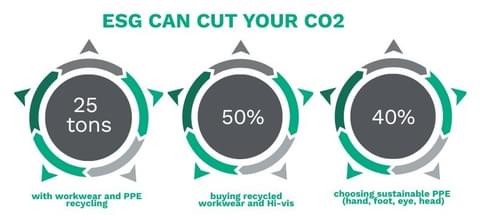
I’ve had this conversation more times than I can count. A team is trying to hit sustainability targets, but budgets are tight.
They ask, “We’d love to do more on ESG, but isn’t it expensive?”
It’s a fair question. ESG has long been seen as a cost, something you do because you must, not because it delivers commercial value. But that view is changing. And it should.
Because when ESG is built into your operations, not bolted on as a side project, it starts unlocking real savings. Not theoretical benefits. Not vague reputational wins. Actual, measurable impact on procurement, logistics, product usage, and long-term planning.
And here’s the part that often gets overlooked. Your suppliers shouldn’t just be supporting your ESG goals. In many cases, they should be driving them.
We work with organisations that have thousands of employees, multiple sites, and complex supply chains. These are the environments where ESG can deliver dramatic improvements.
To make it as relatable as possible to larger businesses, I have broken it down with a real-world example based on a 5,000-employee organisation for the two main areas.

By streamlining product ranges and cutting unnecessary SKUs, businesses can save around £67,500 per year. This isn’t just buying less, it’s about buying smarter. Fewer overlapping items, more multi-purpose solutions, and a clearer procurement strategy.
The next area I have seen big gains for businesses is consolidated supply and delivery. When you combine deliveries across categories like PPE, cleaning, and workwear, you reduce transport costs, admin overhead, and internal handling.
For a business of this size, that equates to roughly £60,000 in annual savings. One clear way to do this by consolidating under one supplier. But make sure they meet my criteria for finding the right single source supplier!
Then there’s cost-in-use optimisation (I talk about this in more detail here). This is where product quality really matters! Take hi-vis polos. A premium option may cost 55 percent more upfront, but its annual cost of ownership is over 60 percent lower than a budget alternative. Scaled to 5,000 employees, that switch alone can save £34,000 per year.
These aren’t hypothetical numbers. They’re based on real procurement data and actual product performance. They show that ESG, when done right, doesn’t just protect the planet, it protects your bottom line.

Obviously ESG isn’t just about reducing costs, it’s about reducing carbon too. And this is where the right supplier strategy makes a difference.
Circular workwear and PPE recycling is one of the most effective ways to reduce waste. By diverting used garments from landfill or incineration, organisations can cut around 25 tonnes of carbon emissions per year. It also supports Scope 3 reporting and strengthens ESG credentials.
Sustainable PPE is another high-impact area. By switching to products with recycled content or carbon-neutral manufacturing, businesses can reduce embedded emissions by up to 40 percent. Across hand, foot, eye, and head protection, that adds up to an estimated 18 to 22 tonnes of carbon savings annually.
Then there’s recycled workwear and hi-vis. Garments made from recycled materials, such as those in the LEO range, can reduce emissions by up to 50 percent per item. This supports circular procurement and helps organisations move closer to net zero targets.

ESG should be a lever for smarter decision-making. When embedded into how a business operates, not just what it buys, it delivers real value. I’ve seen it!
